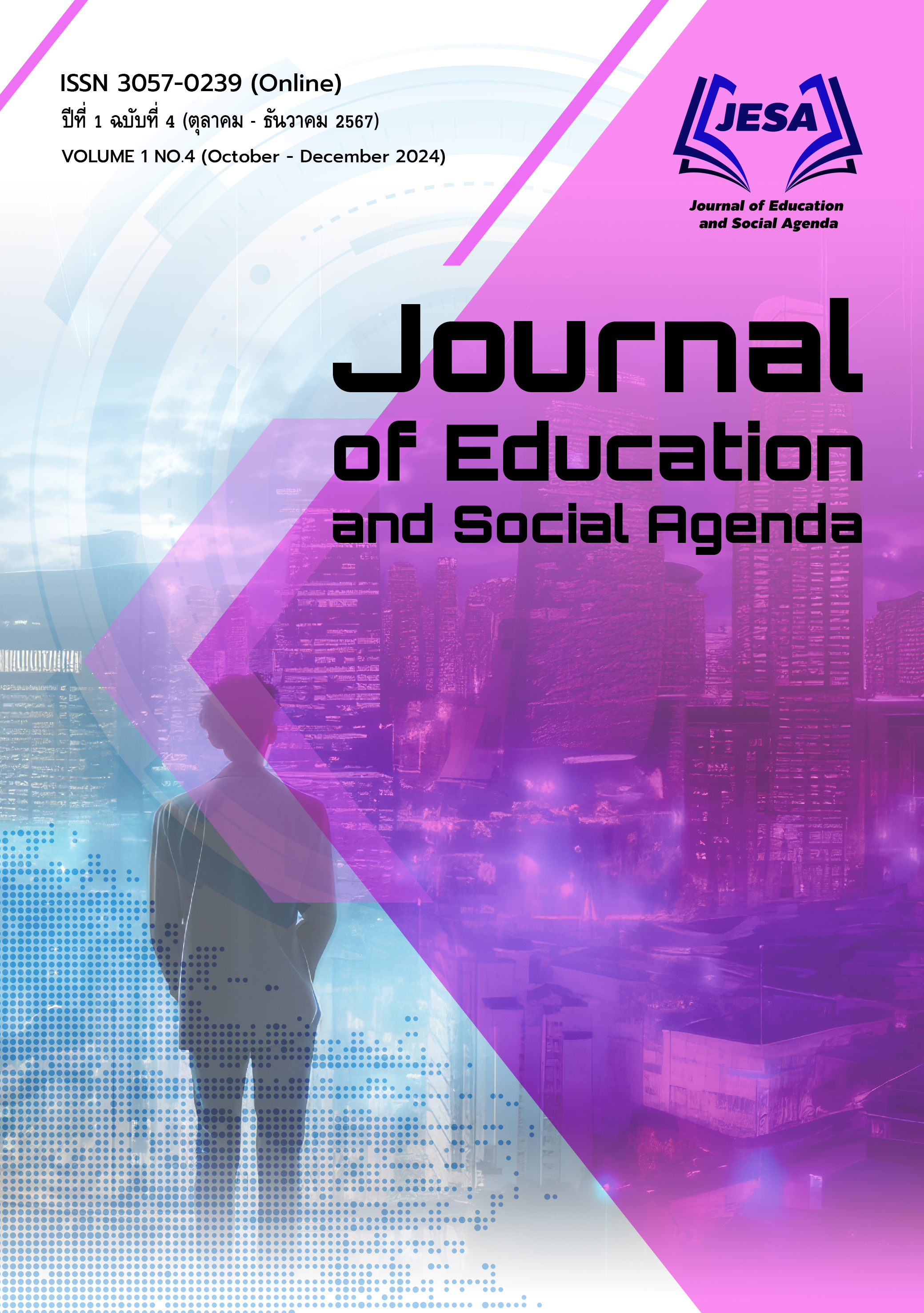The Analysis of the Karma of Upasika in Theravada Buddhist Scriptures: A case Study of Etadagga Upasika
Keywords:
Karma, Upasika , Theravada Buddhist ScripturesAbstract
This research article aims to 1) the karma rules in Theravada Buddhism are studied. (2) The actions of upasika who become foremost disciples (etadagga) are studied. We also studied karma and the results displayed by these foremost laywomen. The study employs a document-based approach, utilising sources such as the Pili Canon, commentaries, subcommentaries, research works, books, and relevant articles. The findings reveal the following: 1) The principles of karma in Theravada Buddhism define karma as intentional actions performed through body, speech, or mind. We refer to wholesome actions as "kusala karma" and unwholesome actions as "akusala karma." The law of karma operates impartially, determining the moral status of all beings based on their actions. The results of karma manifest differently, akin to planting seeds, hunting animals, fleeing from a dog, or dropping an object from a height. 2) The actions of 10 prominent upasika in their past were shaped by their determination to achieve the status of a foremost disciple after witnessing the Buddha appoint another upasika to such a position. They performed exceptional, wholesome deeds and aspired to this distinguished role, reborn repeatedly across divine and human realms for 100,000 aeons. 3) These upasika’s behaviour in past lives varied by body, speech, and mind. Most performed wholesome deeds, while some engaged in unwholesome actions. In their present lives, they reap the results of their past karma, including attaining the eye of wisdom after hearing the Dhamma and being recognised by the Buddha as foremost among laywomen.
References
ธรรมรักษา. (2542). พระไตรปิฎก และอรรถกถา ฉบับกรรมลิขิต. กรุงเทพฯ : รุ่งแสงการพิมพ์สติ.
พระพรหมคุณาภรณ์ (ป.อ.ปยุตฺโต). (2559). พจนานุกรมพุทธศาสตร์ ฉบับประมวลศัพท์. (พิมพ์ครั้งที่ 28). กรุงเทพฯ : สำนักพิมพ์ผลิธัมม์.
พระสัทธัมมโชติกะ ธัมมาจริยะ. (2539). ปรมัตถโชติกะ มหาอภิธัมมัตถสังคหฎีกา ปริเฉทที่ 5 เล่ม 2 กัมมจตุกกะ-มรณุปปัตติจตุกกะ. กรุงเทพฯ : ทิพย์วิสุทธิ์มูลนิธิสัทธัมมโชติกะ.
มณีรัตน์ มีจั่นเพชร. (2563). อุบาสกอุบาสิกาต้นแบบในพุทธกาล : มิติการทำนุบำรุงพระพุทธศาสนา. (วิทยานิพนธ์ศาสนศาสตรมหาบัณฑิต สาขาวิชาพุทธศาสน์ศึกษา). บัณฑิตวิทยาลัย : มหาวิทยาลัยมหามกุฏราชวิทยาลัย.
มหาวิทยาลัยมหาจุฬาลงกรณราชวิทยาลัย. (2532). อรรถกถาภาษาบาลี ฉบับมหาจุฬาอฏฺกถา. กรุงเทพฯ : โรงพิมพ์มหาจุฬาลงกรณราชวิทยาลัย.
มหาวิทยาลัยมหาจุฬาลงกรณราชวิทยาลัย. (2535). พระไตรปิฎกภาษาบาลี ฉบับมหาจุฬาเตปิฏกํ 2500. กรุงเทพฯ : โรงพิมพ์มหาจุฬาลงกรณราชวิทยาลัย.
มหาวิทยาลัยมหาจุฬาลงกรณราชวิทยาลัย. (2539). ฎีกาภาษาบาลี ฉบับมหาจุฬาฎีกา. กรุงเทพฯ : โรงพิมพ์มหาจุฬาลงกรณราชวิทยาลัย.
มหาวิทยาลัยมหาจุฬาลงกรณราชวิทยาลัย. (2539). ปกรณวิเสสภาษาบาลี ฉบับมหาจุฬาปกรณวิเสโส. กรุงเทพฯ : โรงพิมพ์วิญญาณ
มหาวิทยาลัยมหาจุฬาลงกรณราชวิทยาลัย. (2539). พระไตรปิฎกภาษาไทย ฉบับมหาจุฬาลงกรณราชวิทยาลัย. กรุงเทพฯ : โรงพิมพ์มหาจุฬาลงกรณราชวิทยาลัย.
มหาวิทยาลัยมหามกุฏราชวิทยาลัย. (2525). พระไตรปิฎกภาษาบาลี ฉบับสฺยามรฏฺเตปิฏกํ 2525. กรุงเทพฯ : โรงพิมพ์มหามกุฏราชวิทยาลัย.
มหาวิทยาลัยมหามกุฏราชวิทยาลัย. (2534). พระไตรปิฎกพร้อมอรรถกถา แปล ชุด 91 เล่ม. กรุงเทพฯ : โรงพิมพ์มหามกุฏราชวิทยาลัย.
วศิน อินทสระ. (2519). หลักกรรมและการเวียนว่ายตายเกิด. กรุงเทพฯ : สำนักพิมพ์ บรรณาคาร.
สำนักงานสถิติแห่งชาติ. (2561). การสำรวจสภาวะทางสังคม วัฒนธรรม และสุขภาพจิต. กรุงเทพฯ : กระทรวงดิจิทัลเพื่อเศรษฐกิจและสังคม.
แสง จันทร์งาม. (2525). ประทีปธรรม. กรุงเทพฯ : บรรณาคาร.

Downloads
Published
How to Cite
Issue
Section
License
Copyright (c) 2024 Asia Connect Journal

This work is licensed under a Creative Commons Attribution-NonCommercial-NoDerivatives 4.0 International License.
This article is published under a Creative Commons Attribution-NonCommercial-NoDerivatives 4.0 International License (CC BY-NC-ND 4.0), which allows others to share the article with proper attribution to the authors and prohibits commercial use or modification. For any other reuse or republication, permission from the journal and the authors is required.
